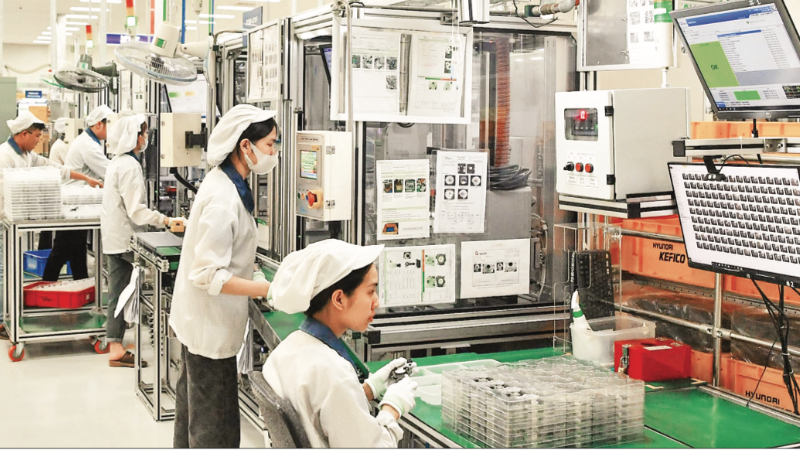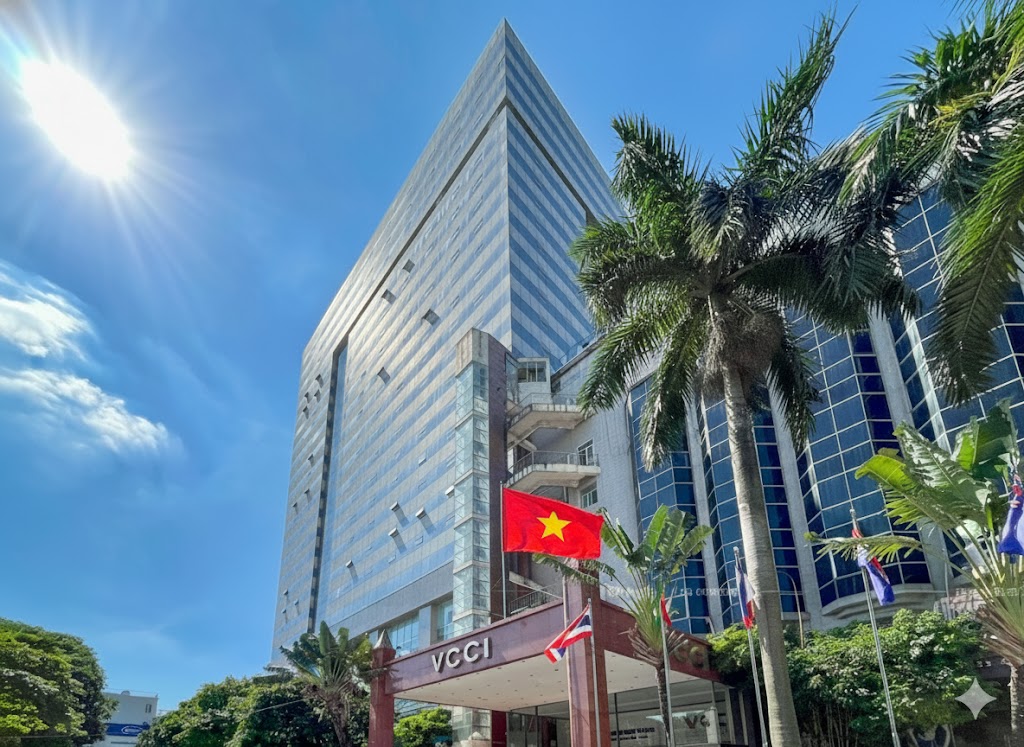The workforce amid a technological wave
As the labour market comes under increasing pressure from artificial intelligence (AI), automation, and emerging operational models, developing a flexible and adaptive workforce ecosystem is no longer a choice but an urgent requirement.

This demands alignment between human resource development policies, economic orientation, and science and technology strategies.
Bottlenecks in human resources
While the application of technology in production and business operations is vital for survival, many enterprises—especially small and medium-sized ones operating in labour-intensive sectors such as manufacturing, retail, logistics, or agriculture—face a major barrier to digital transformation: fear of workforce disruption and negative impacts on employment.
Pham Duc Nghiem, Deputy Director of the Department of Startup and Technology Enterprises (Ministry of Science and Technology), noted that many micro and small enterprises struggle to find appropriate technologies or consultancy systems, and most lack the capital to invest. Even when they acquire the technology, they often lack skilled personnel to operate it. If qualified staff are available, businesses still face challenges such as the absence of long-term strategies, a weak culture of innovation, and especially limited management capacity.
To help businesses overcome these challenges, experts suggest introducing a “phased transformation” mechanism. This allows businesses to avoid overhauling their entire operations at once and instead begin with easily applicable tasks such as e-invoicing, online accounting, or sales management. This gradual approach helps employees adapt to technology without being overwhelmed by abrupt changes. Financial support is also necessary to give businesses the confidence to invest in technology.
In parallel, collaboration between the government, technology enterprises, and educational institutions to implement practical training programmes, online learning, and certification courses is crucial.
Associate Professor Dr Nguyen Thi Minh Tan, Director of the Institute for Research and Development of Natural Compounds at Ha Noi University of Science and Technology, stated that the government should launch several key programmes with designated funding and select training service providers through competitive bidding. This would allow capable private enterprises to design supplementary training courses and popularise new skills for disadvantaged groups in the evolving job market. Private enterprises offering quality services should be entrusted with delivering these training programmes to ensure effectiveness and avoid waste and inefficiency.
Another critical factor is encouraging technology enterprises to develop solutions that are friendly and accessible to users. Software should be simple to operate, feature intuitive interfaces, and even include voice control capabilities to help low-skilled workers adapt quickly.
Forecasts suggest that about 70% of traditional jobs in Viet Nam will be significantly impacted by AI over the next decade. Technology solution providers predict that AI will be the leading technology shaping business operations in Viet Nam within the next 5–10 years. Reflecting this trend, MISA Joint Stock Company reported that its MISA AVA assistant is already helping human resources departments reduce manual processes and improve productivity by 50%.
In 2025, the company will continue its AI expansion strategy through two flagship platforms: AI Agent, which enables enterprises to create and operate AI assistants tailored to their specific needs; and One AI, which simplifies the deployment and usage of AI applications in a unified and efficient manner. The ultimate goal is to make AI a mainstream tool accessible to all businesses for effective integration and use.
Building a new workforce
Experts emphasise that businesses must embed human development into their digital transformation roadmaps, with both enterprises and workers investing in continuous learning and digital skill enhancement.
Mai Thi Thanh Oanh, Deputy General Director of Coc Coc Co., Ltd., believes the government should play a guiding role—establishing regulatory frameworks for technology pilots and promoting basic digital skill education, especially in labour-intensive, manual sectors. Technology enterprises, in turn, should be partners in developing streamlined, accessible solutions that align with the operational capacities of local businesses.
When each stakeholder plays their role effectively, a “facilitative government – collaborative enterprise” model can become a pillar supporting broad-based technology adoption without disrupting the workforce. This would gradually enable the business community to advance within the digital economy.
Building a technology-adaptive workforce ecosystem cannot rely solely on businesses. Higher education is the critical starting point for shaping the mindset, knowledge foundation, and professional attitude of future workers.
Professor Dr Hoang Xuan Thao, Head of the Information Technology Faculty at Ha Noi University of Business and Technology (HUBT), said that the rapid evolution of technology presents both opportunities and challenges for universities. Institutions must continuously update their curricula and guide students to be ready for the new labour market landscape.
Likewise, at Phenikaa University, educational reform includes launching new degree programmes and transforming teaching methods. Students are engaged in applied research projects at the university’s R&D Centre and participate in practical learning in innovation spaces. The university also strengthens its ties with businesses to integrate real-world challenges into academic programmes.
This model helps bridge the gap between academia and the labour market, ensuring graduates are job-ready for high-tech environments and meet the evolving demands of the fast-changing workforce shaped by digital transformation.
Human resources cannot be separated from macroeconomic factors such as economic structure, policy orientation, and enterprises’ technological absorption capacity. The quality of human capital is directly affected by how the economy is organised, regulated, and directed.”
Pham Duc Nghiem, Deputy Director, Department of Startup and Technology Enterprises (Ministry of Science and Technology)
However, Associate Professor Dr Nguyen Minh Tan argues that reform at the university level is only a surface-level solution. To truly create a workforce that can adapt to technology, changes must start from the foundation—general education. The goal is to nurture fundamental thinking skills, creativity, a spirit of continuous learning, and strong ethical values among the younger generation—core elements that determine lifelong learning and working capacity in an ever-changing world.
Additionally, solving the workforce challenge at its root requires a national strategy for science and technology human resource development. This strategy should form the basis for coordinated, sustainable implementation of training and job creation programmes by ministries, sectors, localities, and enterprises.
Agreeing with this view, Pham Duc Nghiem highlighted that labour must not be viewed in isolation from the broader economic structure, macroeconomic policies, and a business’s ability to absorb technology. The quality of human capital is intrinsically linked to how the economy is structured and guided.
He cited that when sectors such as real estate, natural resources, or trade are over-incentivised due to high profitability, this dampens the motivation to invest in technology and consequently leads to low demand for highly skilled workers.
Conversely, when economic policies are adjusted to promote manufacturing, technological innovation, and value creation, the labour market will shift towards higher skill levels and greater creativity. Thus, to shape a workforce suited for the technology era, there must be alignment between human resource development policies and economic–technological strategies.








